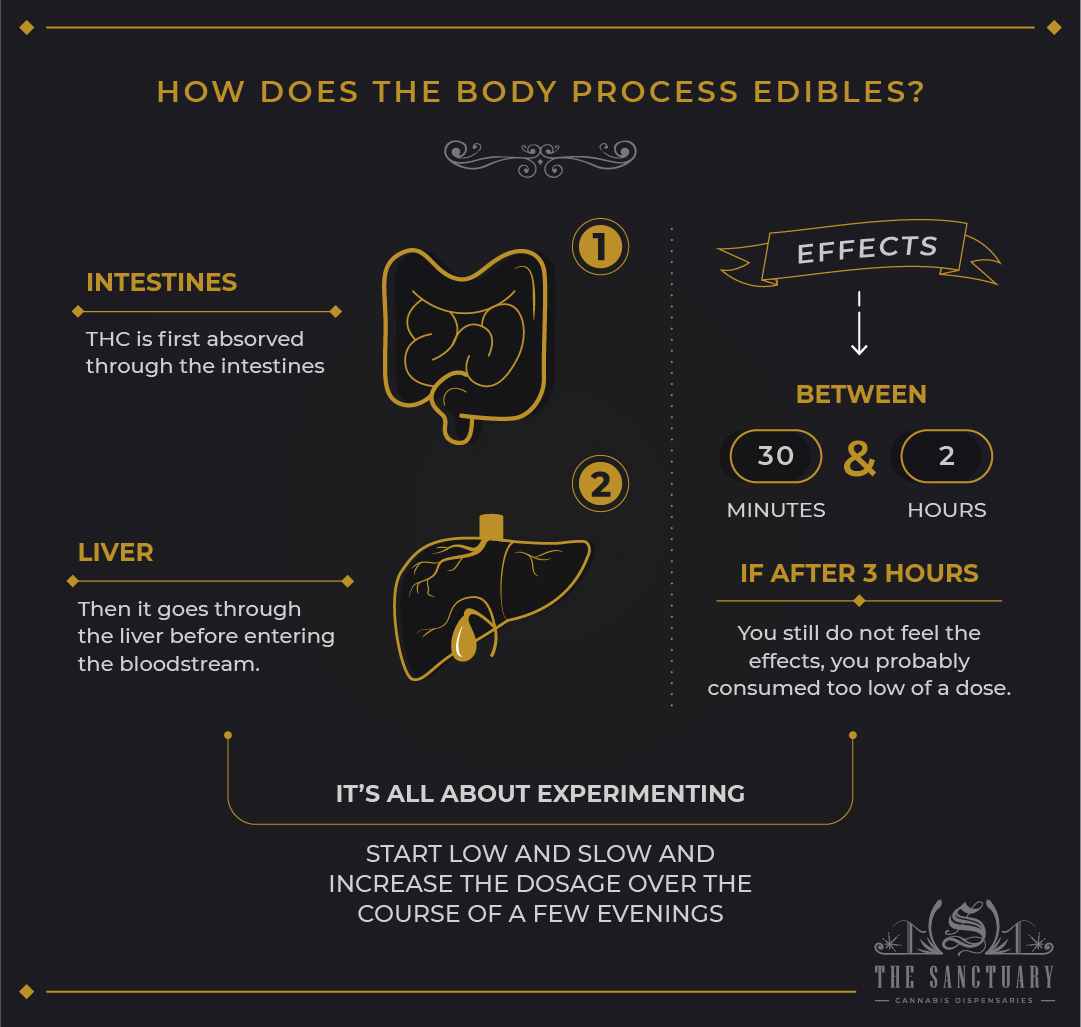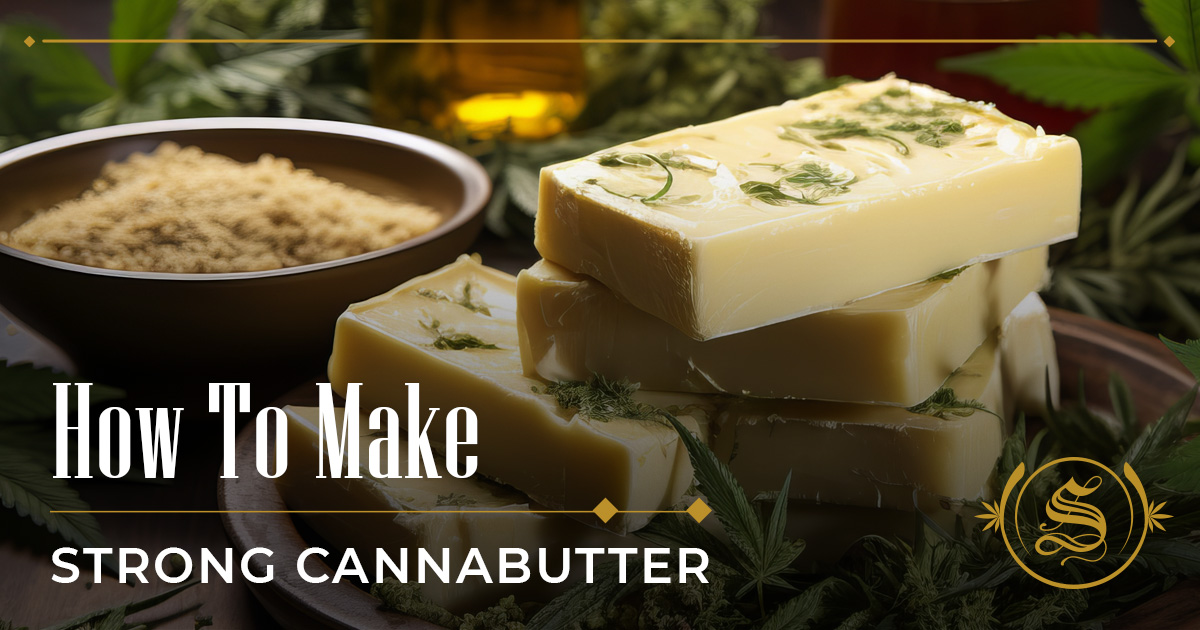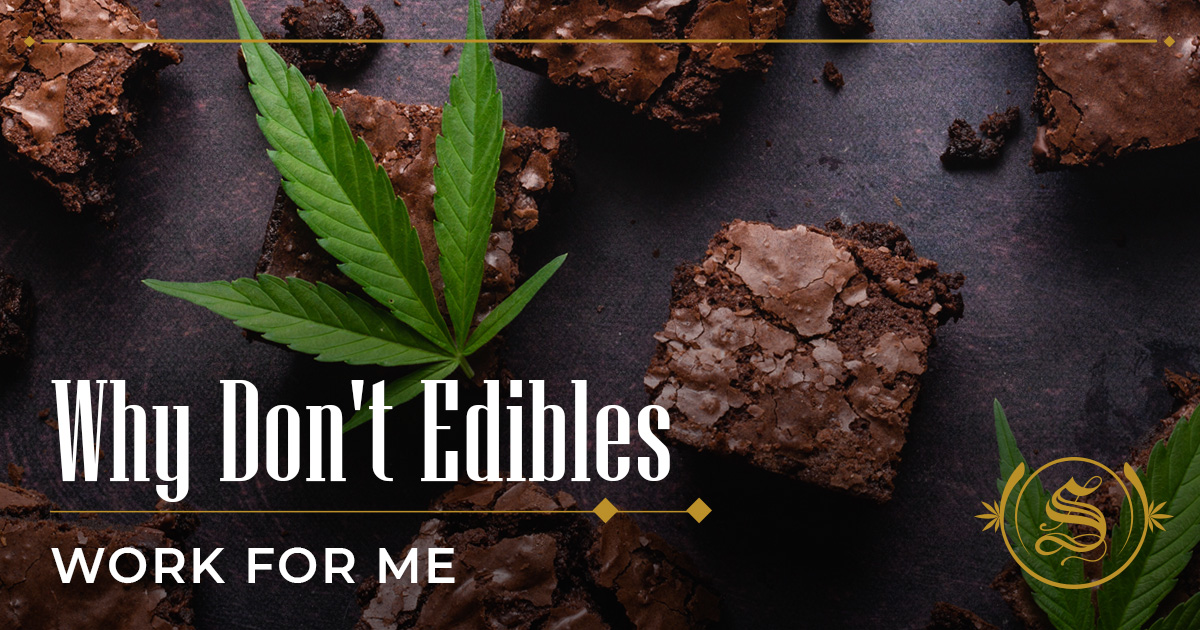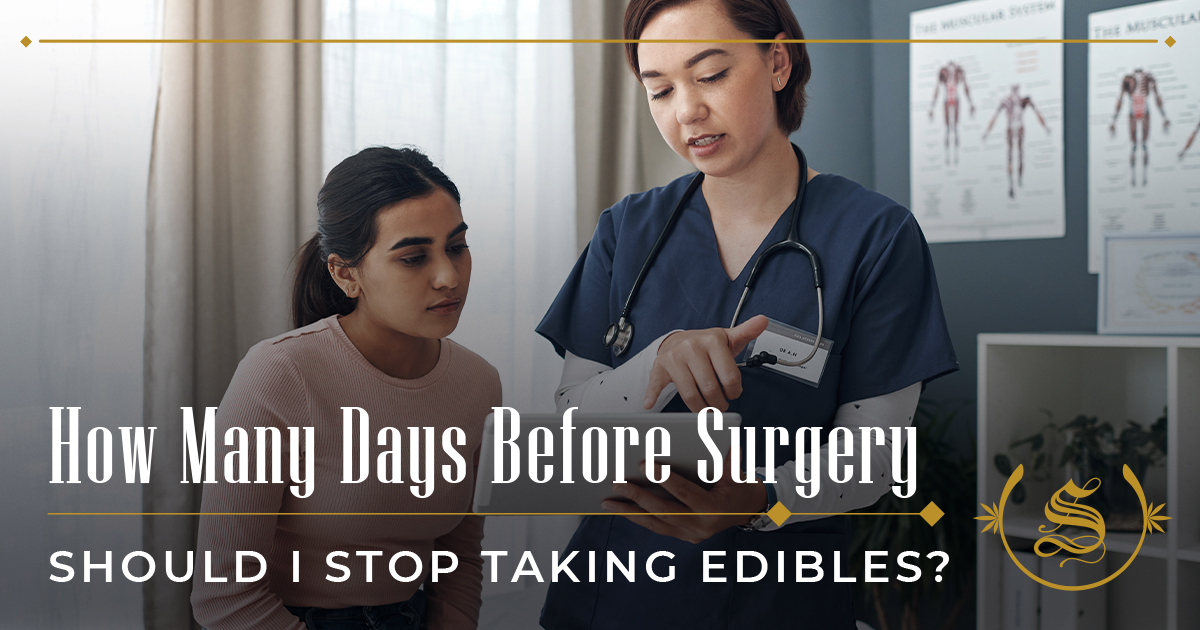Iftikhar Alam
Author
Reviewed by Cannabis Experts
Published on: November 5, 2020 | Updated on: July 21, 2024
In the modern era, cannabis edibles are more than just pot brownies. Nowadays they come in all shapes, sizes, and flavors. Cannabis-infused edibles can be either foods or beverages, including things like candies, breads, teas, sodas, etc.
Edibles can be a great source of medicine for patients who prefer not to inhale smoke and they can be a fun experience for recreational users to try something different.
In general, an edible will provide its users with a long-lasting, strong high; but not always. Believe it or not, some people may not feel any effects from an edible and not necessarily because of a lack of trying.
How does the body process edibles?

The body processes edibles differently than any other method of weed consumption. When cannabis is smoked or vaped, you inhale it directly into your lungs. When the cannabinoids enter the lungs they almost immediately absorb into the bloodstream and then travel to the brain. This leads to a rapid onset time of just a few minutes.
For edibles, on the other hand, it will take anywhere from 30 minutes to 2 hours before you start feeling the effects. If 3 hours have passed after consuming an edible and you still feel no effects then either the edible was a dud or your body just does not react to them.
Finding an effective dosage
Finding the perfect dose of a weed edible is all about experimentation. In general, 10-15 milligrams of THC per dose is considered a standard dose. Some people need more to feels their desired effects and others need less; you will not know the perfect dose until you try.
Another aspect to consider is that weed has a variable effective dose range. What this means is that each person has a specific amount of THC that they can take until they begin to feel any effects at all. Some people only need a minimum of 3 mg THC until they begin to feel something. Others may need at least 30 mg.
Because of this variable effective dose range, some people might not be consuming enough THC to feel high without realizing it. They may think the edible does not work but in fact, they just have not consumed enough.
How your metabolism affects your high
Metabolism involves more than just your body figure, it also determines how your body breaks down drugs. First pass metabolism effect helps to explain how this works.
First pass metabolism is the process of your liver filtering out foreign substances from your bloodstream before the blood circulates throughout the rest of your body. When it comes to the entire metabolism, everyone is different and therefore processes drugs differently.
When a person ingests an edible, a majority of the active THC breaks down in their liver before it gets a chance to travel to the brain and cause any psychoactive effect. Luckily, enough active THC still makes it to the brain to induce the effects of being high.
A person with a very strong first-pass metabolism can break down the THC in the liver to the extent that it is too diluted by the time it reaches the brain to create any sort of psychoactive effect. This means no matter how strong your edible is, it may become ineffective.
If you believe this may be an issue for yourself, try taking THC via sublingual absorption. If you allow THC to absorb underneath your tongue, the cannabinoids enter the mucus membranes and glands of your mouth, penetrating the bloodstream directly while bypassing the liver and its metabolic functions. The high from sublingual consumption will not last as long as edibles but is longer than smoking.
Inconsistencies in edibles
Whether it is taste, potency, or amount needed to get high, edibles especially on the black market are notoriously inconsistent. This aspect can scare people away from edibles and rightfully so. There are countless stories of people eating an edible from a friend that turned out to be way stronger than anticipated.
If you still plan to eat your friend’s homemade edibles, just be aware of how potency works for batch making. For example, in a tray of weed brownies, some pieces will end up containing more THC content than the others. Your friend might eat a brownie that contains roughly 20 mg of THC and your piece only has 10 mg. Additionally, the cannabis material and infusion type of an edible makes predicting effects nearly impossible.
With the rise of dispensaries becoming the main source for cannabis products, there are industry standards that did not exist pre-regulation. In the current market, companies that produce and sell weed edibles are mandated to test their products in a lab before they can hit the shelves.
Edible manufacturers are beginning to use uniform starting materials to ensure guaranteed consistency for medical and recreational users alike. Using specific strains per product is also key for consumers to identify which edibles may work better for them based on their familiarity with the strain.
Lastly, edible manufacturers are beginning to utilize the impact of the “entourage effect” by formulating edibles in a very specific manner.
The “entourage effect”, is the principle of using all the compounds in cannabis to make diverse and unique products. These compounds include cannabinoids, flavonoids, and terpenes among various other elements. The combination of all these elements produces distinct, nuanced effects and potentially more benefits than products that only contain a single isolated compound like THC or CBD.
It just may not be suitable for you
Edibles are like any other drug in that they may or may not work well with your body chemistry. For some individuals, edibles do not work at all to get them high. If this is the case for you then you may feel like you are missing out. Luckily, there are new cannabis products coming out every year which should leave you with plenty to experiment with.
If you are a medical patient that does not get relief from edibles and you can only consume cannabis via digestion then consider speaking with a medical professional for some alternative suggestions.
Sources
Footnotes
- Iversen L. How cannabis works in the brain. Marijuana and Madness. 2004;2:1-6.
- Lemberger L, Rubin A. Cannabis: the role of metabolism in the development of tolerance. Drug Metabolism Reviews. 1978;8(1):59-68.
- Farokhnia M, McDiarmid GR, Newmeyer MN, Munjal V, Abulseoud OA, Huestis MA, Leggio L. Effects of oral, smoked, and vaporized cannabis on endocrine pathways related to appetite and metabolism: a randomized, double-blind, placebo-controlled, human laboratory study. Translational psychiatry. 2020;10(1):71.
- Barrus DG, Capogrossi KL, Cates SC, Gourdet CK, Peiper NC, Novak SP, Lefever TW, Wiley JL. Tasty THC: promises and challenges of cannabis edibles. Methods report (RTI Press). 2016;2016.
- McClements DJ. Enhancing efficacy, performance, and reliability of cannabis edibles: Insights from lipid bioavailability studies. Annual review of food science and technology. 2020;11:45-70.
- Chen PX, Rogers MA. Opportunities and challenges in developing orally administered cannabis edibles. Current opinion in food science. 2019;28:7-13.
References
- Can’t Get High From Edibles?. Trichome Institute. Accessed 4/7/2024.
- Your Cannabis Edibles Questions Answered: How Long Do Edible Effects Last?. GoodRx Health. Accessed 4/7/2024.
- Help! Why Don’t Edibles Get Me High?. NuggMD. Accessed 4/7/2024.
The content provided on this blog is for informational purposes only and does not constitute medical, legal, or professional advice. Cannabis use is subject to local laws and regulations, which vary widely by jurisdiction. Always consult with a healthcare professional before starting any new treatment or altering an existing treatment regimen. The authors and publishers of this blog are not responsible for any actions taken based on the information provided herein. Use cannabis responsibly and in accordance with applicable laws. This blog is intended for adults aged 21 and over. The Sanctuary Dispensaries D186, D187.








